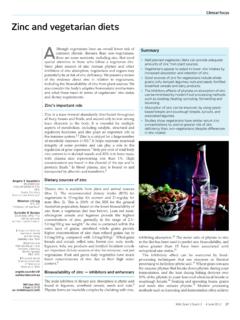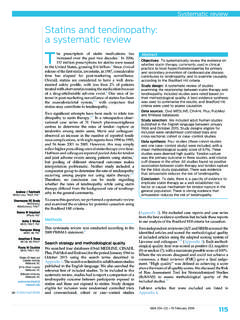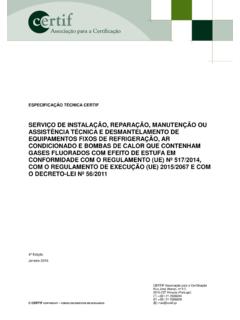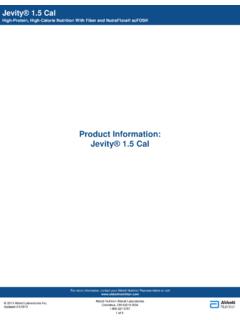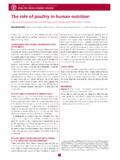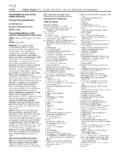Transcription of Clinical focus Meeting the nutrient reference …
1 Clinical focus33 MJA Open 1 Suppl 2 4 June 2012 MJA Open ISSN: 0025-729X 4 June 2012 1 2 33-40 MJA Open 2012 Focuslthough only 5% 6% of females and 1% 3% ofmales claim to be vegetarian,1,2 a 2010 NewspollSurvey (commissioned by Sanitarium Health andWellbeing) found that seven out of 10 Australians areeating more plant-based meals than previously, in thebelief that eating less meat and more plant foods improvesoverall health. As with any dietary practice, vegetariandiets need to be well planned to ensure that meals arehealthy, delicious and nutritionally has shown that a well planned vegetarian dietcan meet nutritional needs for good health4 and mayreduce the risk of cancer,4-8 cardiovascular disease,5,8,9metabolic syndrome, insulin resistance, type 2 diabetes,10-14hypertension7,15,16 and ,17-19 Choosing plant-based meals is also environmentally diets are generally lower in saturated fat andcholesterol and higher in dietary fibre.
2 Antioxidants andphytochemicals than non-vegetarian It is likely thatthe combination of these factors provide vegetarians with asignificant health ,23,24 Our article showcases well designed lacto-ovo-vegetarian meal plans for all age groups and both sexesthat meet the nutrient reference value (NRV) requirements(Box 1), as well as the higher requirements set for iron andzinc for challenge for vegetariansSince the release, in 2006, of the revised nutrient referencevalues for Australia and New Zealand including recommendeddietary intakes,25 which supersede the 1991 recommendeddietary intakes ( rdis ),26 there has been some concernexpressed about the ability to meet these recommend-ations.
3 Compared with the 1991 rdis , the 2006 NRVsrecommend a small increase in iron for men, women andpregnant women and an increase in zinc for men (Box 2).For vegetarians, the further recommended increases inMeeting the nutrient reference values on a vegetarian dietASummary Surveys over the past 10 years have shown that Australians are increasingly consuming more plant-based vegetarian meals. Many studies demonstrate the health benefits of vegetarian diets. As with any type of eating plan, vegetarian diets must be well planned to ensure nutritional needs are being met. This Clinical focus project shows that well planned vegetarian diets can meet almost all the nutritional needs of children and adults of all ages.
4 Sample single-day lacto-ovo-vegetarian meal plans were developed to comply with the nutrient reference values including the increased requirements for iron and zinc at 180% and 150%, respectively, for vegetarians for both sexes and all age groups set by Australia s National Health and Medical Research Council and the New Zealand Ministry of Health. With the exception of vitamin D, long-chain omega-3 fatty acids and extended iron requirements in pregnancy for vegetarians, the meal plans meet key requirements with respect to energy; protein; carbohydrate; total fat; saturated, poly- and monounsaturated fats; -linolenic acid; fibre; iron; zinc; calcium; folate; and vitamins A, C, E and A ReidBND, APD, AN,Senior Dietitian,Nutrition Marketing1 Kate A MarshAdvAPD,MNutrDiet, PhD,Director andSenior Dietitian2 Carol L ZeuschnerBSc, MSc, APD,Manager of Nutritionand Dietetics3 Angela V SaundersBS(Dietetics),MA(Ldshp&Mgmt HS),APD,Senior Dietitian,Science and Advocacy1 Surinder K BainesBSc(Hons), APD, PhD,Senior Lecturer,Nutrition and Dietetics41 Corporate Nutrition,Sanitarium Healthand Wellbeing,Berkeley Vale, Northside Nutrition andDietetics, Sydney, Sydney AdventistHospital, Sydney, School of HealthSciences, University ofNewcastle,Newcastle, Open 2012.
5 1 Suppl 2: 33 40doi: intakeALA -linolenic acidAMDR acceptable macronutrient distribution rangeDHAdocosahexaenoic acidEERestimated energy requirementEPAeicosapentaenoic acidn-3 PUFA omega-3 polyunsaturated fatty acidNRVnutrient reference valuePALphysical activity levelRDIrecommended dietary intakeULupper level of intake34 MJA Open 1 Suppl 2 4 June 2012 Clinical focusiron requirement (80% higher than current rdis for non-vegetarians) and zinc requirement (50% higher thancurrent rdis for non-vegetarians) present additionalchallenges. The higher iron requirement is based on theassumption that only 10% of iron is absorbed from avegetarian diet, compared with 18% from a mixed diet thatincludes ,27 The higher zinc requirement is based onthe fact that vegetarian diets have a higher phytatecontent25,28-30 and evidence that the phytate-to-zinc ratiocan affect zinc ,27 Iron and zinc requirementsare discussed in detail elsewhere in this ,32 Developing meal plansThe aim of our project was to develop single-day lacto-ovo-vegetarian meal plans that could be used aseducational tools for vegetarian clients.
6 Sample meal planswere developed for each sex and age category (Box 3),taking into account the appropriate physical activity level(PAL). The meal plans show the types and quantities offoods required to comply with the were selected from a wide range of commonlyavailable Australian foods. Each meal plan was devised tomeet the recommended increased iron (180% of RDI) andzinc (150% of RDI) requirements within reasonable energyintakes while keeping macronutrient intakes within theacceptable macronutrient distribution range (AMDR).25 Other nutrients, such as -linolenic acid (ALA), fibre,vitamin B12, vitamin C and calcium were included inamounts designed to meet the prescribed NRV value whilenot exceeding the upper level of intake (UL) for sodium orcertain antioxidants such as vitamins A and When theNRVs differed between sexes within an age group, themeals were planned to meet the higher requirementswithin an energy range applicable to both males andfemales.
7 In many cases, meal plans were sex less than 1 year old were not considered because of1 Definitions of nutrient reference values25 nutrient reference valueDefinitionEstimated average requirement (EAR)A daily nutrient level estimated to meet the requirements of half the healthy individuals of a particular sex and life dietary intake (RDI)The average daily dietary intake level that is sufficient to meet the nutrient requirements of nearly all healthy individuals (97% 98%) of a particular sex and life intake (AI)*The average daily nutrient intake level based on observed or experimentally determined approximations or estimates of nutrient intake by a group (or groups) of apparently healthy people that is assumed to be level of intake (UL)The highest average daily nutrient intake level likely to pose no adverse health effects to almost all individuals in the general population.
8 As intake increases above the UL, the potential risk of adverse effects increases.* Used when an RDI cannot be determined. 2 Comparison of 199126 and 200625 nutrient reference values (NRVs) for iron and zinc recommended by the National Health and Medical Research Council, including NRVs for vegetariansMenWomenPregnant womenLactating womenRDI19 70+ yearsVeg eta ri an*19 70+ yearsVegetarian*14 50 yearsVegetarian*14 50 yearsVegetarian*Iron19917mg16mg /7 mg 22 mg /36 mg 16 mg /7 mg 20068mg14mg18mg /8 mg 32 mg /14 mg 27 mg49 mg10 mg /9 mg 18 mg /16 mg Zinc199112 mg12 mg16 mg18 mg200614mg21mg8mg12mg10mg /11 mg 15 mg /16 mg 11 mg /12 mg 17 mg /18 mg RDI = recommended dietary intake. * 180% of non-vegetarian rdis for iron and 150% of non-vegetarian rdis for zinc.
9 19 50 years. 51 70+ years. 14 18 years. Clinical focus35 MJA Open 1 Suppl 2 4 June 2012variable intake and reliance on breastmilk or infantformula as their main source of requirements for each meal plan weredetermined according to the estimated energyrequirements (EERs) outlined in the Within eachNRV age group under 18 years, the youngest child in thegroup was chosen, on the grounds that if nutritionalrequirements are met at a lower energy level, requirementswill also be met for older or more active energy may be added as required. For adults,average height (165 cm for women and 175 cm for men),along with PAL, determined the estimated energyrequirements.
10 Although the 1995 National NutritionSurvey states that the mean height for adults over 19 yearsis cm for women and cm for men,33 we adoptedthe average heights of 165 cm for women and 175 cm formen as used by the National Health and Medical ResearchCouncil in the recent revision of the Australian guide tohealthy PAL of (moderate activity) was chosen forteenagers and adults. A PAL equal to or above isconsidered compatible with a healthy lifestyle for light PAL ( ) was chosen for young children, olderadults, pregnant women and lactating women. In line withNRV recommendations, an additional MJ/day MJ/day were applied for pregnant and lactatingwomen, no vegetarian consumption data are currentlyavailable, food selection for meal plans was based on foodsthat are commonly available in Australia and areconsidered good sources of the nutrients in focus .


